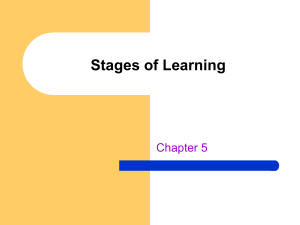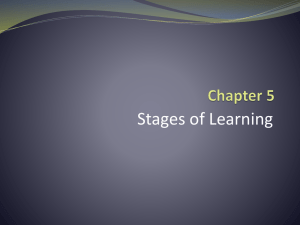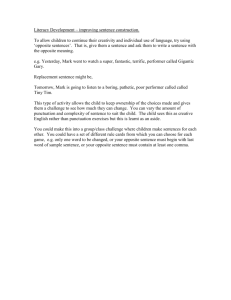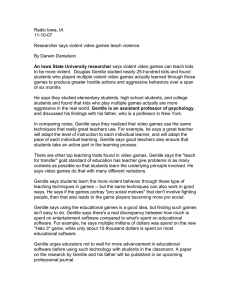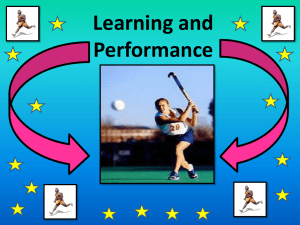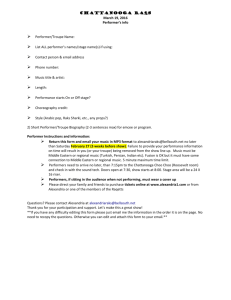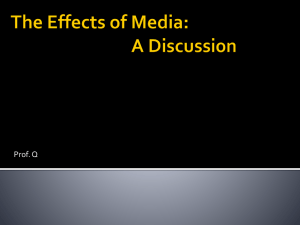Chapter 12. The Stages of Learning
advertisement
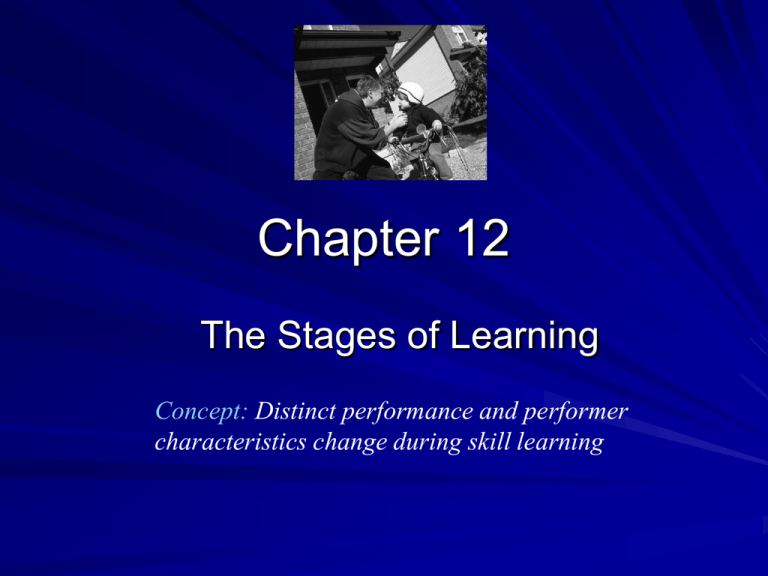
Chapter 12 The Stages of Learning Concept: Distinct performance and performer characteristics change during skill learning Introduction People progress through distinct stages (phases) as they learn a motor skill – i.e, as they progress from being a beginner to being highly skilled Two models proposed to identify and describe the stages: – Fitts and Posner three-stage model – Gentile two-stage model The Fitts and Posner Three Stage Model Fitts and Posner (1967) proposed motor skill learning involved three stages [see Fig. 12-1] – Cognitive stage: Beginner focuses on solving cognitively-oriented problems – Associative stage: Person has learned to associate cues from the environment with required movements; works to refine performance to be more consistent – Autonomous stage: Final stage where performance of the skill is “automatic” (in terms of attention demanded) Gentile’s Two Stage Model 1. Gentile (1972, 1987, 2000) proposed motor skill learning progress through two stages: Initial stage – Learner works to achieve two goals: 1) Movement coordination pattern to enable some degree of success achieving action goal 2) Learn to discriminate between regulatory and non-regulatory conditions in environmental context Gentile’s Two Stage Model, cont’d 2. Later stages – Involves learner acquiring three characteristics: 1) Adapting movement pattern acquired in Initial stage to demands of any performance situation 2) Increase consistency of action goal achievement 3) Perform with an economy of effort Gentile’s Two Stage Model, cont’d Unique feature of Gentile’s “Later stages” – Learner’s specific goals depend on the type of skill being learned – Closed skills require fixation of movement pattern Refine Initial stage movement pattern to consistently repeat optimal movement pattern to achieve action goal – Open skills require diversification of movement pattern Refine Initial stage movement pattern to enable adaptation to changing environmental conditions Performer and Performance Changes Across the Stages of Learning Stages of learning models describe distinct characteristics at each learning stage that change across the stages – Observable changes are noted for both the person and the skill performance We will overview a few characteristics Benefits of considering these characteristics: – Provides a closer look at the skill learning process – Establishes why we need to develop different instruction strategies for people in different learning stages Performer and Performance Changes Across the Stages of Learning, cont’d Changes in rate of improvement Changes in movement coordination Changes in altering an old or preferred coordination pattern Changes in muscles used to perform the skill Changes in energy cost Performer and Performance Changes Across the Stages of Learning, cont’d Changes in achieving the kinematic goals of the skill Changes in visual selective attention Changes in conscious attention with performing a skill Changes in error detection and correction capability Changes in brain activity A Performer Characteristics that Does Not Change Across the Stages of Learning Practice specificity hypothesis – Learning is specific to the sources of sensory information available during practice When we use visual feedback during practice in the first stage of learning, – We continue to need this feedback, even after we become more skillful with additional practice Proteau (1998) hypothesized and provided evidence that a dependency on the sensory feedback develops because it becomes a part of the memory representation of the skill Expertise An “expert” – A person who is located at the extreme right end of the learning stages continuum Experts in all skill performance areas have in common some distinct characteristics, e.g. – – Amount and type of practice that resulted in expertise – Knowledge structure – Use of vision Predicting Future Achievement Two of several approaches researchers have used to determine if performance in the initial learning stage predicts performance in later stages: 1. Correlating initial and later performance 2. Intertrial correlations
